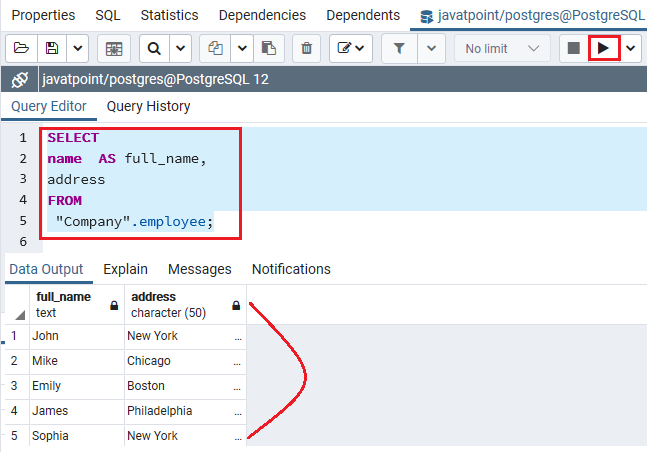

#POSTGRESQL INSERT INTO SELECT FROM UPDATE#
However, ON CONFLICT DO UPDATE also requires SELECT privilege on any column whose values are read in the ON CONFLICT DO UPDATE expressions or condition. Similarly, when ON CONFLICT DO UPDATE is specified, you only need UPDATE privilege on the column(s) that are listed to be updated. If a column list is specified, you only need INSERT privilege on the listed columns. If ON CONFLICT DO UPDATE is present, UPDATE privilege on the table is also required. You must have INSERT privilege on a table in order to insert into it. WHERE clause condition was not satisfied, the row will not be returned. For example, if a row was locked but not updated because an ON CONFLICT DO UPDATE. Only rows that were successfully inserted or updated will be returned. The syntax of the RETURNING list is identical to that of the output list of SELECT. However, any expression using the table's columns is allowed.
#POSTGRESQL INSERT INTO SELECT FROM SERIAL#
This is primarily useful for obtaining values that were supplied by defaults, such as a serial sequence number. The optional RETURNING clause causes INSERT to compute and return value(s) based on each row actually inserted (or updated, if an ON CONFLICT DO UPDATE clause was used).

ON CONFLICT can be used to specify an alternative action to raising a unique constraint or exclusion constraint violation error. Tables with unique indexes might block if concurrent sessions perform actions that lock or modify rows matching the unique index values being inserted the details are covered in Section 64.5.

INSERT into tables that lack unique indexes will not be blocked by concurrent activity. If the expression for any column is not of the correct data type, automatic type conversion will be attempted. The values supplied by the VALUES clause or query are associated with the explicit or implicit column list left-to-right.Įach column not present in the explicit or implicit column list will be filled with a default value, either its declared default value or null if there is none. If no list of column names is given at all, the default is all the columns of the table in their declared order or the first N column names, if there are only N columns supplied by the VALUES clause or query. The target column names can be listed in any order. One can insert one or more rows specified by value expressions, or zero or more rows resulting from a query. Use LIMIT to specify top 20 rows, but I think you need to sort them using ORDER BY clause first.INSERT inserts new rows into a table. I don't like that nested dblink, but AFAIK I can't reference to tblB in dblink_exec body. If my understanding is correct (postgres has tbla and dbtest has tblb and you want remote insert with local select, not remote select with local insert as above): psql dbtest I just saw your revised question (closed as duplicate, or just very similar to this). You can make it as prepared statement if you want and it works as well: PREPARE migrate_data (integer) AS PostgreSQL has record pseudo-type (only for function's argument or result type), which allows you query data from another (unknown) table. INSERT INTO tblB (time) VALUES (5000), (2000) ĬREATE TABLE tblA (id serial, time integer) įROM dblink('dbname=dbtest', 'SELECT id, time FROM tblB') For example: psql dbtestĬREATE TABLE tblB (id serial, time integer) As Henrik wrote you can use dblink to connect remote database and fetch result.


 0 kommentar(er)
0 kommentar(er)
